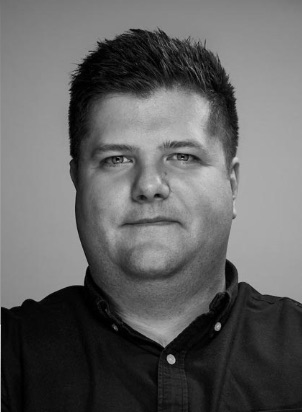The at-home care technology market has become increasingly important to the strategy of payer, provider, and life science companies alike.
A recent study by Current Health found that 81 percent of health systems are planning on increasing investment in home health care. Another survey, from January of this year, found that nearly 60 percent of health care CFOs see home care as a key investment opportunity. Even before the pandemic, investors were intrigued by the home health care market and saw its potential value.
With the pandemic forcing health systems to manage patients remotely more than ever before, there is more opportunity for non-traditional players to find their footing in home health care. Best Buy, no longer content to just sell people computers and video games, has been quietly building its health care division over the past few years with acquisitions of GreatCall and Critical Signal Technologies, as well as the launch of a senior-focused smartphone.
Best Buy Health’s latest move in the space happened recently when it acquired U.K.-based Current Health for an undisclosed price. Current Health provides a care at home platform that combines remote patient monitoring, telehealth and patient engagement for providers and decentralized clinical trials for life sciences companies. Current Health CEO and Co-Founder Chris McCann spoke with Health Evolution about the acquisition, why a legacy retail company like Best Buy can disrupt the health care industry, and more.
Why did being acquired by Best Buy Health make sense to Current Health from a strategic standpoint?
They have world class capabilities in proximity to patient, supply chain, distribution and home support. Those are the challenges that we have seen in trying to scale. Health care is inherently physical. You need to be able to reach into the patient’s home. If you are an 85-year-old grandmother with no internet and no smartphone, the need for physical support to get you up and running is significant. That’s the patient we most need to service. When we met Best Buy and it was clear they were trying to use those capabilities to deliver care in the home, we were enthusiastic about that. It was the combination of our technology and their capabilities, but also the culture and the views they had were aligned to ours. It just made sense.
How can traditional retailers like Best Buy make a difference in the health care world?
For Best Buy, they have capabilities that can help provide care in the home. Their experience in retail can be used to support providers in home care. There’s a Best Buy within 15 minutes of 70 percent of the U.S. population. If you are a provider trying to deliver care in the home, that physical proximity to the patient is interesting. One of the things we hear from health care providers all the time is, “How do we support patients at home with technical problems?” There’s a long way to go to make that vision a reality. I think Best Buy has taken a different view than other retail companies, which is to take what we’re amazing at to help health care providers deliver health care to populations who would otherwise need to be in the hospital.
We provide 24/7 support right now, but at some point, you have to go out in the patient’s home. If you are a health system or a vendor trying to do that at scale, how do you do that? That’s what Best Buy does every single day. That’s why this makes sense. It’s not entirely fair to treat retail as a homogenous entity. They’re all thinking about in different ways. I think Best Buy’s way is the right way. Let’s take what we’re already good at it and help providers deliver care.
Delivering health care in the home comes with massive technology, logistical and infrastructure gaps. That’s not where health care has expertise. That’s where they partner with organizations like ours to fulfill those gaps.
Chris McCann, Current Health
What excites you about this move? What scares you?
I’ve never been more excited about Current Health. Digital health is such an exciting space, but most digital health is operating at such a low scale. What I’m excited about is being able to bring in the physical capabilities of a Best Buy to do this at a different level of scale. We meet health systems with hundreds of hospitals and clinics who want to do it across the enterprise. To do that, you need a partner like Best Buy. What scares me is making sure we continue to deliver an amazing experience for our patients and providers. That’s what scared me before we announced this deal. That’s the most important thing for our success and Best Buy’s success.
What did COVID reveal about providers’ ability to deliver in-home care?
I was recently talking to a big health system. They told me they started at COVID doing 10,000 video visits and went up to half a million within two weeks. They scaled their effort. And you see this effort all over. I shuttle between the U.K. and U.S., and it amazes me how health systems reinvented themselves during COVID. Providers literally changed their business and how they deliver health care overnight. Globally. The fact they did that shows that they can do it. They can make that change. We can change. We literally proved we can. We’ve seen patients say, “We don’t want to go back to pre-COVID where you couldn’t get virtual care.” If there’s any silver lining to this whole horrible situation, we proved there could be change and that change could benefit patients.
Why does it make sense for these providers to partner with non-traditional organizations like Best Buy rather than do it internally?
Health care providers are great at delivering health care. That’s what they do. That’s what they should continue to do. If you are a patient with 17 medications and seven comorbidities, they need to be treated by their physician. Delivering health care in the home comes with massive technology, logistical and infrastructure gaps. That’s not where health care has expertise. That’s where they partner with organizations like ours to fulfill those gaps. They can focus on the patient—not on supply chain, distribution, integrating [home health care technology] with EMR. That’s stuff we can do, so they can focus on the patient. This is especially true in the face of staffing shortages and clinician burnout.
Where do you hope to be in a year? Five years?
In a year, I hope we are successfully demonstrating this whole partnership with Best Buy and helping providers deliver care in the home in the U.S. In five years, I hope I am doing that globally. I’ve never been more excited than I am right now. I am in it for the long term to build something here in the U.S. and around the world.
What advice do you have to health care CEOs who are strategizing around home health care?
Be willing to revisit the entire model, both the financial model and getting commercial payers to take on at-risk populations, but also the operational model. Technology like ours, capabilities like Best Buy, allow things to be done in a different way. It takes open mindedness about what the model is and starting from scratch. The most success we see is when providers redesign the care model from the ground up based on those capabilities.











